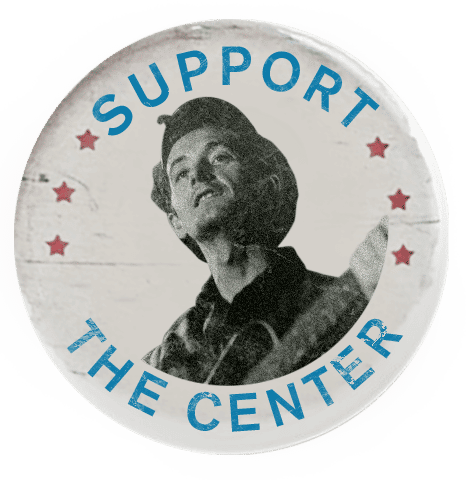Songs of Conscience, Sounds of Freedom examines the role of music in informing and inspiring social consciousness throughout American history, featuring an array of musicians across decades and genres, all using their art to push toward a more equitable world. The exhibit is set to open May 21, 2021.
The exhibit explores music’s role in major social movements as well as the smaller steps in between. Charting a path from spirituals that were sung by enslaved people in America, to the labor movement struggles that Guthrie wrote about in songs like “1913 Massacre,” to the mass movement of music and art that helped to stir action during the Civil Rights Movement of the 1960s to the continued fight for racial justice in America today, the exhibit spans time and genre to tell the stories of music’s role as an inspiration and an educator.
“Songs of Conscience, Sounds of Freedom tells the story of how music of all kinds has played a role in America’s political arena, particularly as a form of protest and as an agent for political, social, racial, and economic change,” said Bob Santelli, GRAMMY Museum® founding executive director and exhibit curator. “Though it offers a sweeping view of the history of protest music, the exhibit pays special attention to the music inspired by Black Lives Matter and other contemporary struggles for justice and equality in America.”
The original Songs of Conscience, Sounds of Freedom special exhibit was first on display at the GRAMMY Museum when it opened in Los Angeles in 2008. In the 13 years since that initial run, the exhibit has been updated to include the growing Black Lives Matter movement and how music from artists like Kendrick Lamar and Childish Gambino continue the traditions of using music to inspire social progress.
The exhibit will also tell the story of Tulsa’s history of racial violence through the eyes and sounds of the upcoming Fire in Little Africa multimedia project. How the Tulsa Race Massacre, which left hundreds dead and dozens of Tulsa city blocks burned and looted at the hands of a white mob, continues to shape life in Tulsa is told through a new album collaboration by Oklahoma rappers and producers. Visitors will see lyrics and other memorabilia related to the project and learn how songs of conscience from Tulsa creators continue to chime the sounds of freedom.
“We are so honored to be debuting this important exhibit in Tulsa in advance of the events planned for the Race Massacre Centennial,” said Woody Guthrie Center® Director Deana McCloud. “We join our neighbors in the Greenwood District in acknowledging the atrocities of our past as we continue the fight to ensure equality and equal opportunities for all who live on this land. Songs of Conscience, Sounds of Freedom shares the historical impact music has had in uniting voices behind a positive message and the power it continues to have as we work together for change.”
Guests can expect to see:
- Handwritten lyrics from Woody Guthrie, Bruce Springsteen, Shemekia Copeland, H.E.R., and others
- Instruments from Guthrie, Pete Seeger, Josh White, John Mellencamp, and more
- “Song Spotlights” that tell the stories of such landmark protest songs as “Strange Fruit,” “A Change Is Gonna Come,” and others.
- Rare performance footage and interviews with prominent topical songwriters
- An interactive history of protest music in America
The exhibit will be on display at the Woody Guthrie Center through October 10, 2021. The current exhibition, Roots, Rock, and Rebels: The Photography of Henry Diltz, ends its run in early May.
About Woody Guthrie Center
The Woody Guthrie Center, opened in 2013, features state-of-the-art exhibits, an extensive outreach and education program, and a concert series to bring his legacy to Tulsans and those who make the pilgrimage to what is a destination for Woody Guthrie fans worldwide. The center is more than a museum; instead, it is a center of investigation for inspiration. By providing examples of Guthrie’s ability to use his creativity as a way of expressing the world around him, we hope to encourage others to find their voices and, through their educational programs, explore the power that lies within the creative process.
About GRAMMY Museum
The GRAMMY Museum is a nonprofit organization dedicated to cultivating a greater understanding of the history and significance of music through exhibits, education, grants, preservation initiatives, and public programming. Paying tribute to our collective musical heritage, the museum explores and celebrates all aspects of the art form — from the technology of the recording process to the legends who’ve made lasting marks on our cultural identity. For more information, visit grammymuseum.org.

